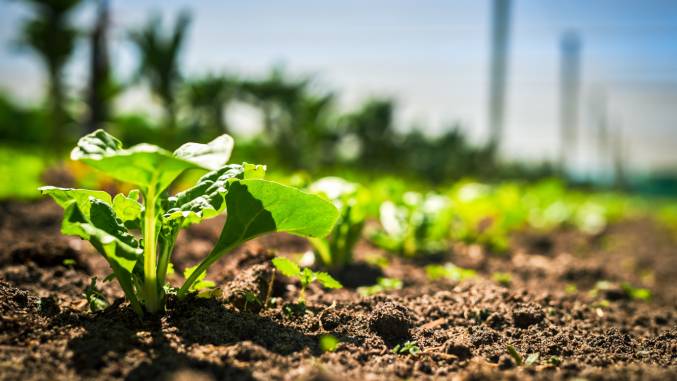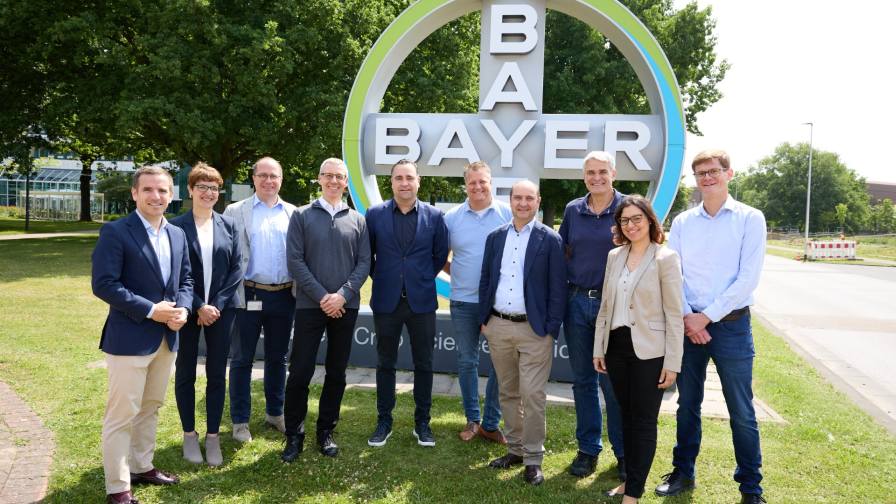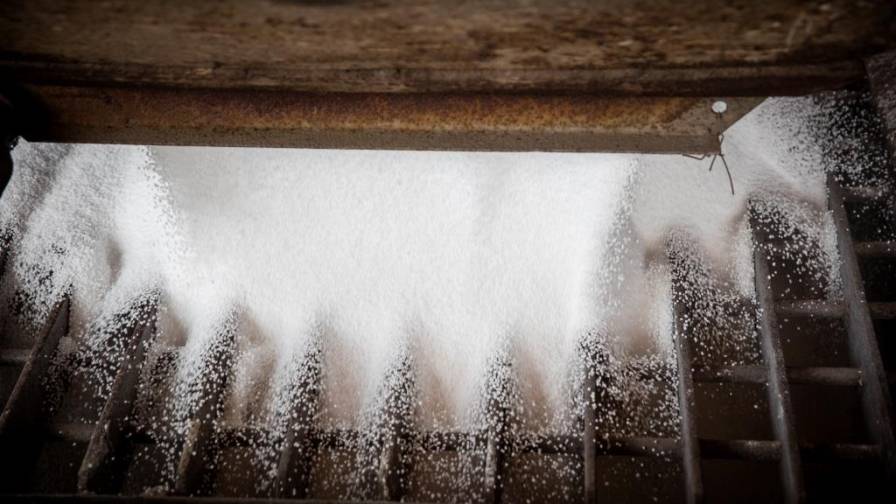Big Plans For Big 6

Every year brings new products from the Big 6’s research and development (R&D) teams. Products from seeds to agrochemicals are working their way through the pipeline, with estimated launch dates from 2008 to 2015. For the last 10 years, more and more of R&D budgets are being dedicated to seeds and traits, based partially on the growing world population and declining available farmland creating the need for higher-yielding crop traits. This year is no different; for many of the Big 6 companies — BASF, Bayer, Dow Agrosciences, DuPont Crop Protection, Monsanto, and Syngenta — the key word is “biotechnology”.
BASF AG
With demand for basic chemicals growing at a much slower pace than agrochemicals, BASF has turned to crop protection for its new R&D concentration. The company’s new active ingredients (ais) coming to market are part of BASF’s focus on agricultural products and genetically modified (GM) crops. The company sees these new products with a big potential payoff: revenue estimates from its eight new ais could reach US $1.126 billion.
Crop protection product demand is a long-term trend, says Michael Heinz, head of BASF Agricultural Products. Such strong support is why BASF and Monsanto entered a US $1.5 billion partnership in March 2007, devoted to the development of GM seeds like canola, corn, cotton, and soybeans. However, BASF has very limited market share in seed distribution.
While BASF’s current seed R&D projects focus on output and agronomic traits, which are not expected to have a major impact on the traditional agrochemical market, the company is also working on some very interesting conventional herbicides, insecticides, and fungicides.
BAYER
In 2006, Bayer announced its plans to increase its seed and trait R&D, focusing its BioScience business on traditional crops. Last year, 13% of Bayer’s R&D budget was devoted to the seed and trait sector; the company’s goal is for an increase to 27% by 2015. It also expects an average increase of 10% to 12% per year in its BioScience sales, reaching US $1.2 million by 2017.
Already in the pipeline are 40 seed and trait projects, with three GM works in the pre-launch phase — including a twin-stacked glyphosate resistant trait aimed at cotton, and Liberty, Bayer’s glufosinate-ammonium herbicide. Both glyphosate-resistant cotton and LibertyLink soybeans are scheduled for 2009-2010. Research on stress tolerance traits is also underway, with possible product action against abiotic stressors like drought appearing from 2015.
Also in 2010, six herbicide tolerant (HT) and insect resistant projects for soybeans and other traditional crops are to be introduced. LibertyLink HT is currently commercialized for cotton and canola, with development underway to market it to corn and soybeans.
DOW AGROSCIENCES
Almost 33% of Dow’s R&D budget was invested in seed and trait projects. Over the next few years, the company plans to increase this percentage. One such measure is an agreement with Sangamo BioSciences; together, the companies have targeted native genes in canola using engineered ZFN technology to zero in on precise, specific gene sites. A Dow press release announced that — in a milestone event — an engineered ZFN targeted a preselected native corn sequence and facilitated site-specific DNA integration.
Dow is developing a new HT technology intended for corn, soybeans, and cotton that could directly compete with the Roundup Ready (RR) trait. This new broadspectrum technology, with an estimated introduction date of 2011 for corn and 2013 for soybeans, will create tolerance to a variety of broadleaf and grass herbicides such as 2,4-D and triclopyr. In addition to corn and soybeans, this product will provide resistance to cotton, canola, rice, and tobacco, and, according to the press release, “will be compatible with all pouplar weed control systems, expanding growers’ options for protecting their yields and managing changing weed spectrums in crops while preserving the viability of the current industry-leading technologies.”
The company is also working on second generation insect resistance technology, as well as several conventional herbicides, like the ai pyroxsulam, a graminicide cereal herbicide with broad-spectrum activity due out next year. Also expected to launch in 2008 is the insecticide spinetoram, a microbe-derived alternative for controlling persistant pests like codling months.
Finally, Dow’s robust pipeline is testing 10 unique delivery systems, some of which could be on the European market in 2009.
DUPONT CROP PROTECTION
In early 2008, DuPont will open its first R&D facility in India, a US $22.5 million investment located in Hyderabad. As of last year, 63.6% of DuPont’s R&D budget was focused on seed traits; however, at the end of 2006 the company announced that an additional US $100 million would be targeted towards seeds and traits. DuPont hopes to improve total R&D productivity by 30% by 2010.
Current R&D projects are closely split between HT traits and insect-resistant traits. HT traits under development are GT cotton and alfalfa, and Optimum GAT, for which regulatory submissions to US Food & Drug Administration and the US Department of Agriculture (USDA) were made for soybeans in 2006 and corn in 2007. Commercially, the trait should be released in 2009 for soybeans and 2010 for corn.
Insect resistant trait R&D projects are lepidopteran- and aphid-resitant soybeans; soybean cyst nematode resistance; corn rootworm- and corn borer-resistant corn; and insect-resistant rice and cotton.
DuPont’s diverse pipeline also contains conventional candidates with enormous potential.
MONSANTO
The leading company — in both sales and R&D developed GM derived traits — in the seed sector, Monsanto is once again dedicating the majority of its R&D budget (more than 90%) to seeds and traits. Monsanto’s successful program has already brought RR canola, cotton, corn and soybeans to the market, as well as pest-resistant varieties of cotton and corn. According to Phillips McDougall, these crop varieties accounted for nearly “95% of the total area of crop varieties containing GM HT traits in 2006.”
At this point, Monsanto has no existing agrochemicals in R&D or early development, as its concentration is on seeds and traits. Currently, the company’s R&D has dicamba-tolerant soybean and cotton varieties, as well as enhanced RR. Monsanto’s first RR crop varieties were based on the GA21 line; later, enhanced versions based on the NK603 line were released, such as Roundup Ready2 corn in 2001 and Roundup Ready Flex cotton in 2006. Over the next few years, Roundup RReady2Yield soybean and canola are expected to be introduced.
Monsanto also holds a strong market position in the insect resistant trait sector, which they will build on with second generation corn borer and corn rootworms varieties; soybean cyst nematode resistance; insect resistance in soybeans; Bollgard III, and lygus control in cotton.
SYNGENTA
Generated for corn and soybean varieties, Optimum GAT — licensed to Syngenta by DuPont — has both glyphosate and ALS herbicide tolerance. When development matures to commercialization, Syngenta will have glyphosate-tolerant traits — along with the ability to compete with the Roundup Ready trait — outside of the RR system.
With 38.4% of its 2006 R&D budget devoted to seeds and traits, Syngenta has its own relatively broad offering in the insect-resistant trait sector. The next few years are expected to see European corn borer/corn rootworm and GT/ECB corn; Vip insect resistance; soybean nematode resistance; and aphid-resistant soybeans.
Syngenta also has a number of agrochemical projects in R&D and early development.





